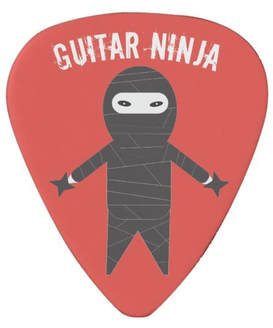|
Often when you hear a guitar player strumming some chords and you notice some motion going on within the chord that sounds nice and interesting – frequently, what they're playing are called “suspended chords” (or sus chords) Suspensions or suspended chords come in two varities – sus4 chords and sus2 chords. A suspended chord substitutes either the 4th or the 2nd in place of the 3rd. Ex) Csus4 = C – F – G and Csus2 = C – D – G. If you're playing a sus4 chords, most musicians just call that it a sus chord (the sus4 is a given) and if you're playing a sus2 chord, you need to call it as such. An aspect of sus chords many musicians aren't aware of is the fact that you can suspend many chords, not just major. Here are some examples: C7sus = C – F – G – Bflat, C6sus = C – F – G – A, C9sus = C – F – G – Bflat – D, C7sus2 = C – D – G – Bflat. I suggest that you take every major and dominant chord you know and practice making them into both sus and sus2 chords. Also, remember you can often do two versions of each suspension by placing the 4ths and 2nds into different octaves. Generally, suspensions are useful whenever you're playing a chord for some length of time. Also, suspensions are frequently played withing single note, arpeggiated chords. A famous example is in the intro of the Boston song “More than a Feeling”.  Ninja PickIf you've ever been to the Guitar Center or shopped online for guitar picks you've likely experienced a healthy dose of overwhelm in the face of seemingly unending options! Picks come in numerous sizes, shapes, thicknesses, textures and are made out of many different materials. Picking is like any other physical motion involved in playing the guitar in that to optimize results it must be done with as much “economy of motion” as possible. (moving as little as possible to maximize efficiency) Achieving this on the guitar requires both economy of motion and making contact with the strings with the very tip of the pick. If, for example, you have a half inch of pick exposed out beyond your fingers and you strike the string a quarter of an inch beyond the tip, this will dramatically slow down your picking because you have to drag your pick that additional distance. The way this relates to my recommendation for beginners in choosing a pick is as follows: If you use a very small pick (teardrop pick) there can only be a tiny bit of pick exposed beyond your fingers which slashes your margin of error – this is the main reason I suggest beginners should use small picks. It is possible, and many players do this, to have more pick exposed and still only make contact with the tip of the pick and be equally efficient as someone using a small pick. Beyond that consideration, the main points to think about when choosing a pick are the comfort of the pick in your hands and the different tones that different picks make on different strings on different guitars. Not surprisingly, with that many variables, this process requires a lot of trial and error. I recommend you buy a large variety of different picks and compare them to each other on the same guitar. |
AuthorEric Hankinson Archives
December 2023
Categories
All
|
|
The Chromatic Watch Company
(my other business) |
|


 RSS Feed
RSS Feed

